Assume that you own a successful online business. In such a place, you would need to generate invoices and email them to your customers. To create a receipt for each buyer, you would have to do the following:
- Open your word processor and paste the user's personal information
- Write the user's purchases in a table and calculate the total
- Download this file and convert it to PDF format
- Email this document to the user
Sure, that might work. But consider this: what if you get hundreds of customers in a single day? This would waste a lot of time and energy since you're doing the same process over and over again. So, how do we mitigate this problem?
The best way to solve this issue is to automate this operation by using an API. This is where react-pdf comes in. It is an open source, easy-to-use library that allows developers to generate PDF documents in a React environment.
In this article, you will learn the basics of the react-pdf library. We will cover the following concepts:
Installation
To install the react-pdf package, run the following terminal command:
npm i @react-pdf/renderer
Simple usage
The following block of code renders a basic PDF document in the browser:
import { Document, Page, Text, View, StyleSheet, PDFViewer, } from "@react-pdf/renderer"; // Create styles const styles = StyleSheet.create({ page: { backgroundColor: "#d11fb6", color: "white", }, section: { margin: 10, padding: 10, }, viewer: { width: window.innerWidth, //the pdf viewer will take up all of the width and height height: window.innerHeight, }, }); // Create Document Component function BasicDocument() { return ( <PDFViewer style={styles.viewer}> {/* Start of the document*/} <Document> {/*render a single page*/} <Page size="A4" style={styles.page}> <View style={styles.section}> <Text>Hello</Text> </View> <View style={styles.section}> <Text>World</Text> </View> </Page> </Document> </PDFViewer> ); } export default BasicDocument; A few inferences from this code:
- The
StyleSheet module allows developers to apply CSS code on their PDF documents. Here, we are telling React to change the background color and the font color of our pages - Furthermore, in the
viewer object, we are using the width and height properties. As a result, this will tell react-pdf that we want the browser's PDF viewer to take up all of the space on the page - As the name suggests, the
PDFViewer component will render a PDF viewer on the browser
Let's test it out! As the next step, render the BasicDocument component to the DOM like so:
import BasicDocument from "./BasicDocument"; function App() { return ( <div className="App"> <BasicDocument /> </div> ); } export default App; 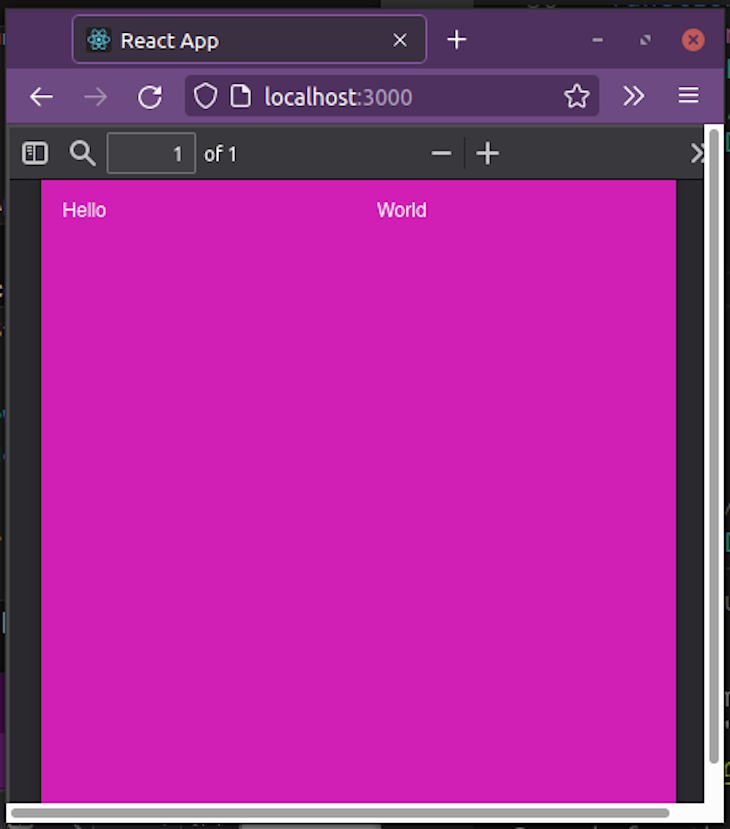
We can even reduce the viewer's available space:
const styles = StyleSheet.create({ viewer: { width: window.innerWidth / 3, height: window.innerHeight / 2, }, //further code... }); In this snippet, we restricted the viewport's width and height properties. This will decrease their available size on the page.
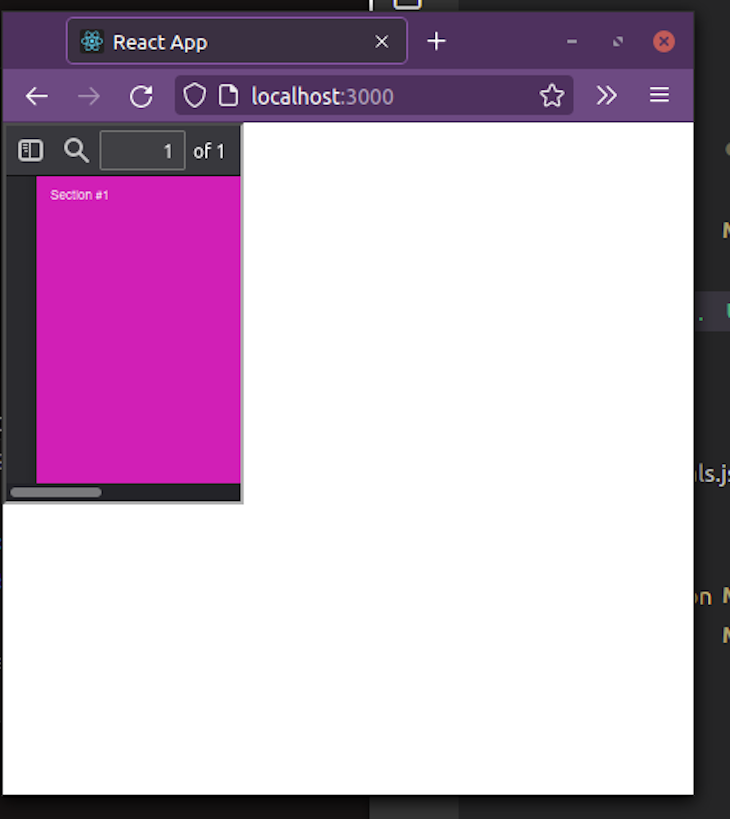
Fundamental components
Embedding links
We can display anchor links using the L component. This is handy for cases where you want to redirect the user to a website:
import { Link } from "@react-pdf/renderer"; <Text> <Link src="https://blog.logrocket.com/generating-pdfs-react/www.facebook.com">Go to Facebook</Link> </Text> Here, we are assigning the src prop to Facebook's website. When the user clicks on this piece of text, the app will redirect them to the page.
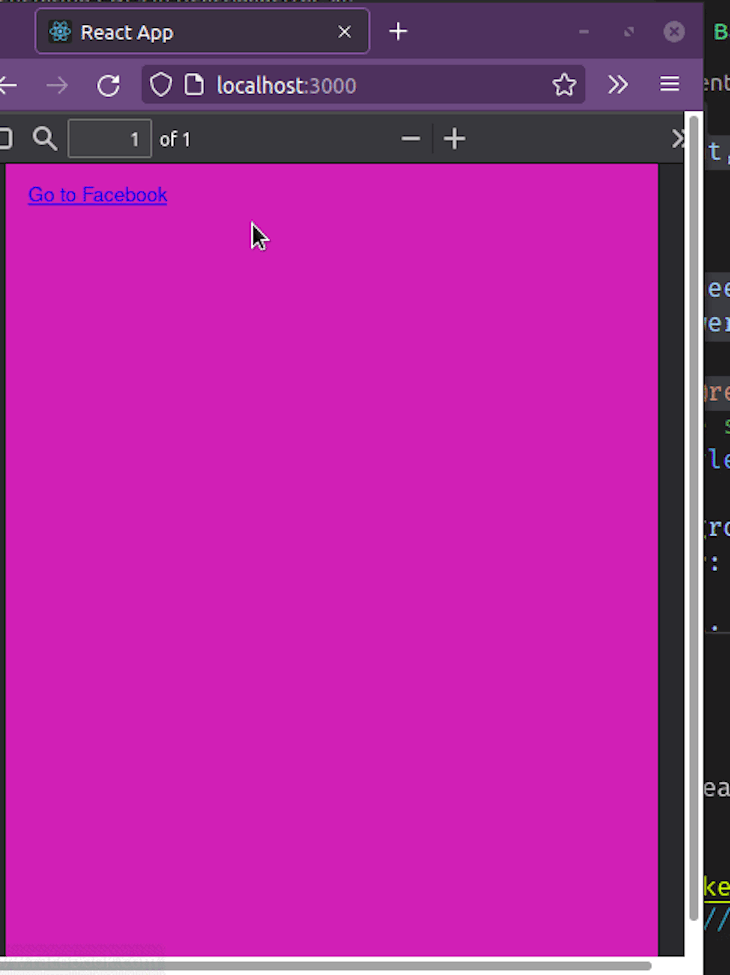
Displaying annotations
To attach annotations in your document, use the Note component. One critical use case for this element is when you need to display comments in a file:
import { Note } from "@react-pdf/renderer"; <Note>This will take the user to Facebook</Note> 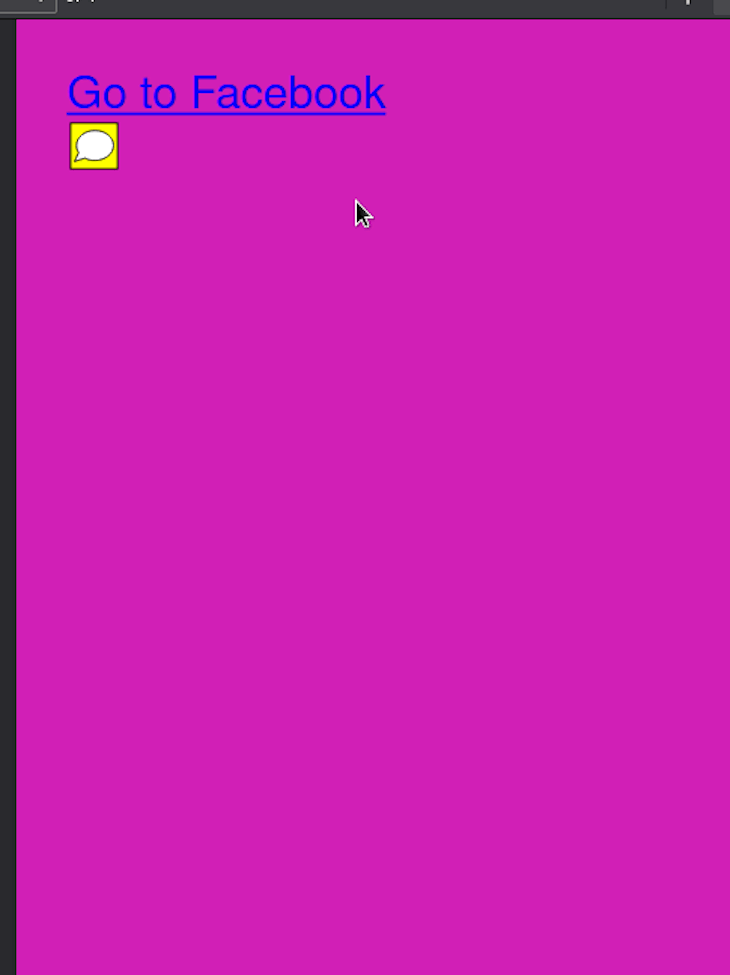
Displaying graphics in a Canvas
The Canvas component lets users draw content on the page. This is suitable for displaying simple diagrams and logos in SVG format.
This code snippet renders a triangle on the page:
import { Canvas } from "@react-pdf/renderer"; // Create styles const styles = StyleSheet.create({ canvas: { backgroundColor: "black", height: 500, width: 500, }, }); <Canvas style={styles.canvas} paint={ (painterObject) => painterObject .save() .moveTo(100, 100) //move to position 100,100 .lineTo(300, 100) //draw a line till 300, 100 .lineTo(300, 300) //draw another line till 300,300 .fill("red") //when the diagram is drawn, set the background color to pink } /> In the above snippet, we used the Canvas component to display a diagram. The paint prop is a callback function. One of its parameters is a painterObject argument, which gives us access to drawing methods.
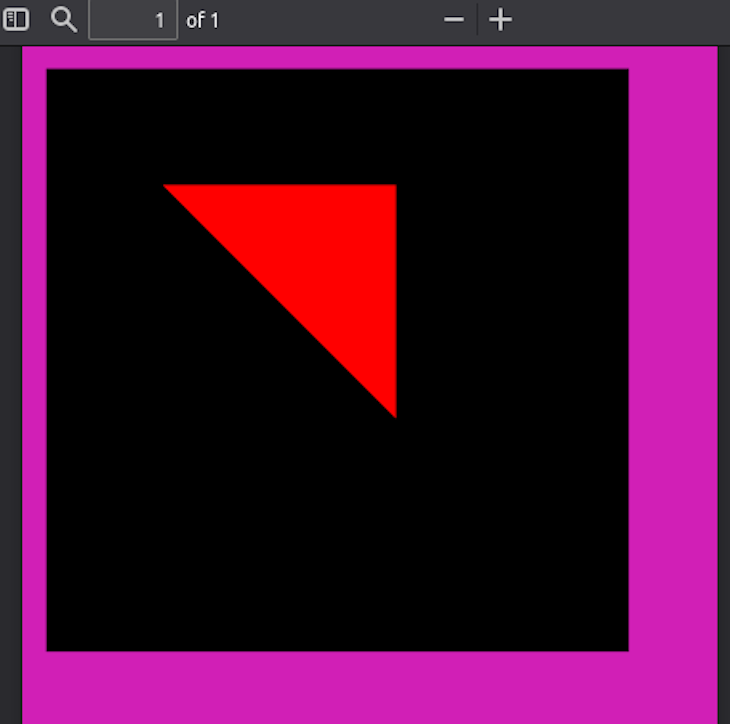
Displaying SVG images
react-pdf also bundles an SVG component to render SVG diagrams. Just like Canvas, we can use this for rendering simple diagrams.
This piece of code renders a line on the page:
import { Line, Svg } from "@react-pdf/renderer"; // Create styles const styles = StyleSheet.create({ line: { x1: "0", //starting coords are x1 and y1 y1: "0", x2: "200", //ending coords: y2: "200", strokeWidth: 2, stroke: "rgb(255,255,255)", //stroke color }, }); <Svg width={"50%"} height={"50%"} style={{ backgroundColor: "blue" }}> <Line style={styles.line} /> </Svg> Here, we used Line to render a line in the document. Notice that Line is a child of the Svg component.
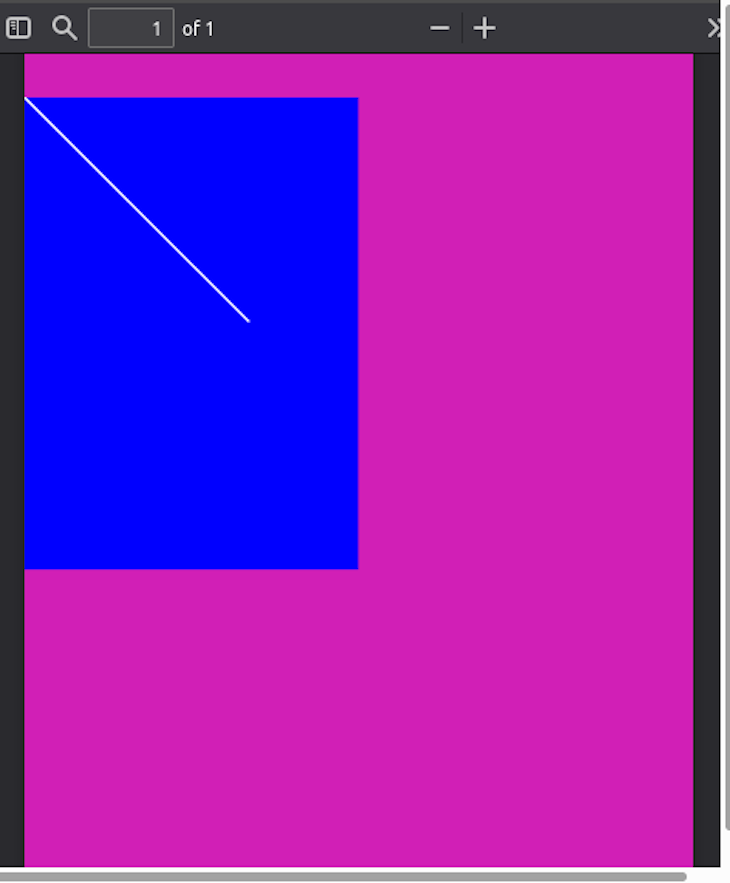
We can also use the Polygon component to render closed shapes like so:
<Svg width={"50%"} height={"50%"} style={{ backgroundColor: "blue" }}> <Polygon points="100,100 200,100 200,250 100,250" fill="white" //color of background stroke="black" //color of border strokeWidth={10} //border thickness /> </Svg> The points prop accepts a dataset of coordinates. This will help the app render the graphic.
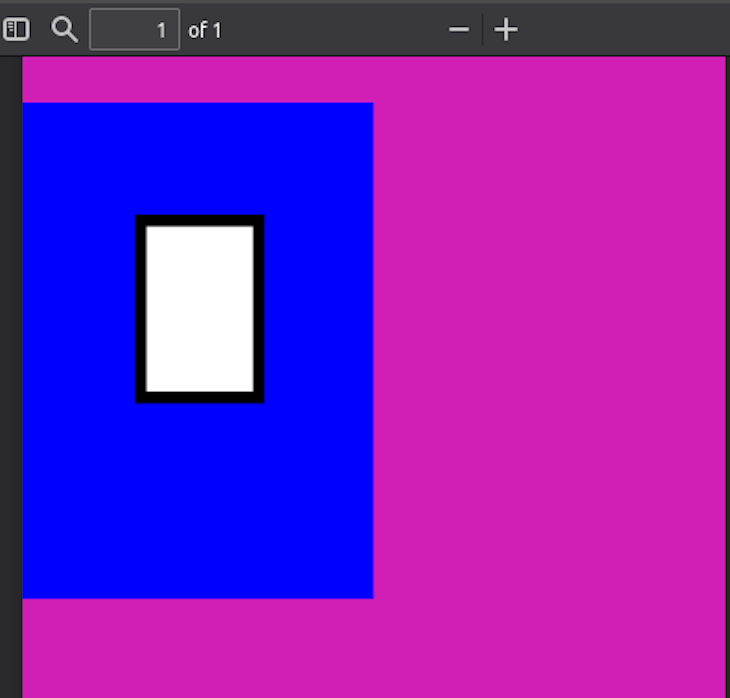
Rendering JPG or PNG photos
The Image component gives us the ability to insert images over the network or on a local disk. This is great for displaying complex diagrams or screenshots.
This block of code renders a 500 by 500 pixel image on the PDF:
import { Image } from "@react-pdf/renderer"; const styles = StyleSheet.create({ image: { width: 500, height: 500, }, }); <Image style={styles.image} src="https://image.shutterstock.com/image-photo/tiny-floating-house-on-lake-600w-1980476267.jpg" /> The src prop contains the source URL of the image that we want to render.
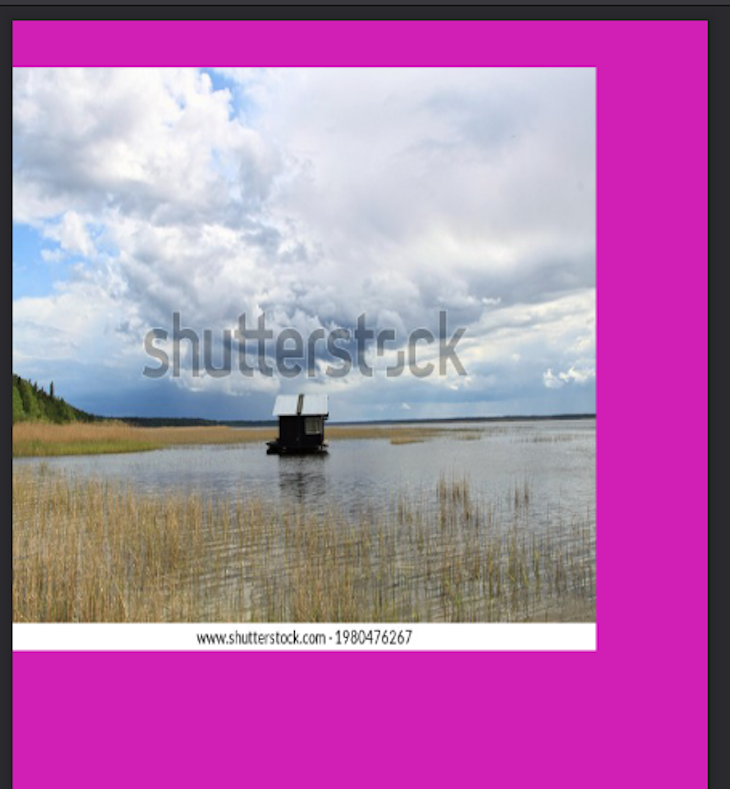
Advanced concepts
Using Flex boxes
Just like CSS, react-pdf lets developers use the flex property, which allows for responsive design. This is handy for cases where you want your documents to scale up or down depending on the device's screen size:
// Create styles. Notice that we have specified a flex direction. const styles = StyleSheet.create({ page: { flexDirection: "column", }, }); <Page size="A4" style={styles.page}> <View style={{ backgroundColor: "black", flex: 1 }}></View> <View style={(styles.section, { backgroundColor: "pink", flex: 1 })}></View> </Page> In this piece of code, we used the flex property on both of our View components. This means that half the page will have a background color of black and the other half will have a pink colored background.
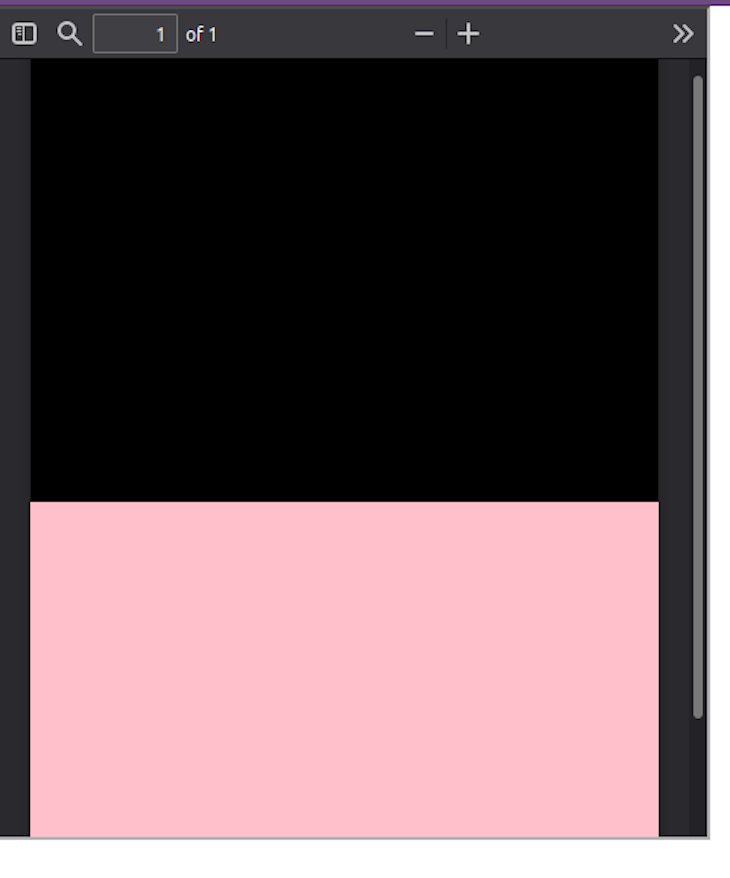
Page breaks
Page breaks are useful for ensuring that a certain element will always show up on the top of the page.
We can enable page breaks via the break prop like so:
// Create styles const styles = StyleSheet.create({ text: { fontSize: 40, }, }); // Create Document Component <Page> <Text break style={styles.text}> First PDF break </Text> <Text break style={styles.text}> Second break </Text> </Page> 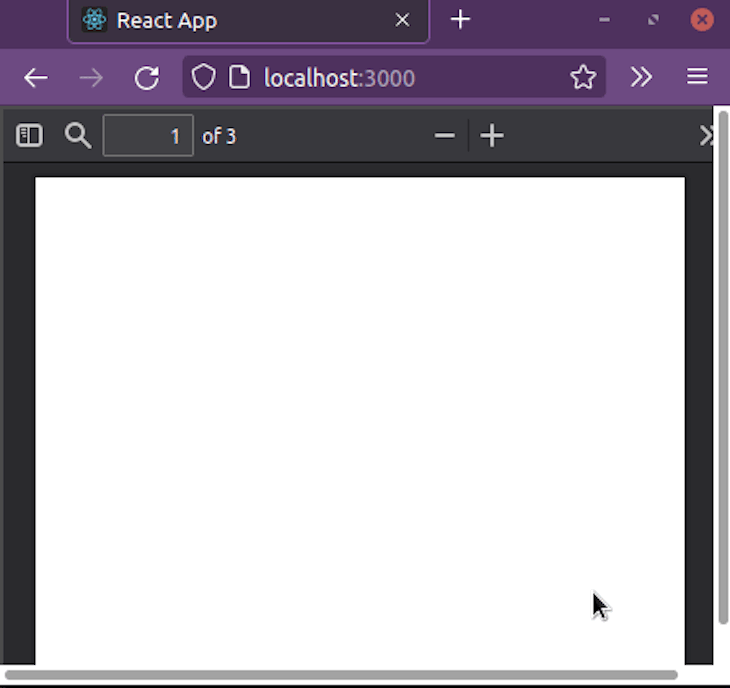
Dynamic page content
With react-pdf, we can render dynamic text using the render prop of the Text component like so:
<Document> <Page size="A4"> <Text style={styles.text} render={({ pageNumber, totalPages }) => `Page ${pageNumber} of ${totalPages}` } fixed /> </Page> <Page> <Text> Hello, second page!</Text> </Page> </Document> Here, the render prop has two arguments: pageNumber (the current index of the page), and totalPages (the total number of pages that this document contains). We are displaying both of their values to the client.
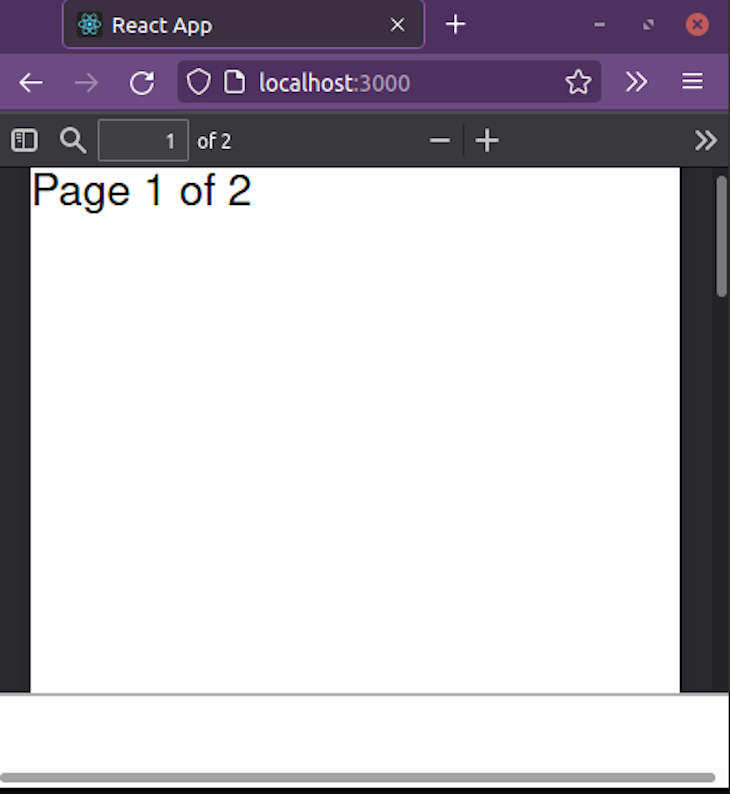
N.B., the render function is executed twice for <Text /> elements: once for layout on the page wrapping process, and another one after it knows how many pages the document will have. Therefore, use it in cases where app performance is not a problem.
We can also use the render prop on our View element:
<View render={({ pageNumber }) => ( //detect if user is NOT on an even page: pageNumber % 2 === 0 && ( <View style={{ background: 'red' }}> {/*If condition is fulfilled, display this component*/} <Text>I'm only visible in odd pages!</Text> </View> ) )} /> Conclusion
In this article, we covered the fundamentals of the react-pdf library. Not only is it secure and robust, but it is also lightweight, thus bringing performance to the table.
Thank you so much for reading! Happy coding!











No comments:
Post a Comment
Note: Only a member of this blog may post a comment.